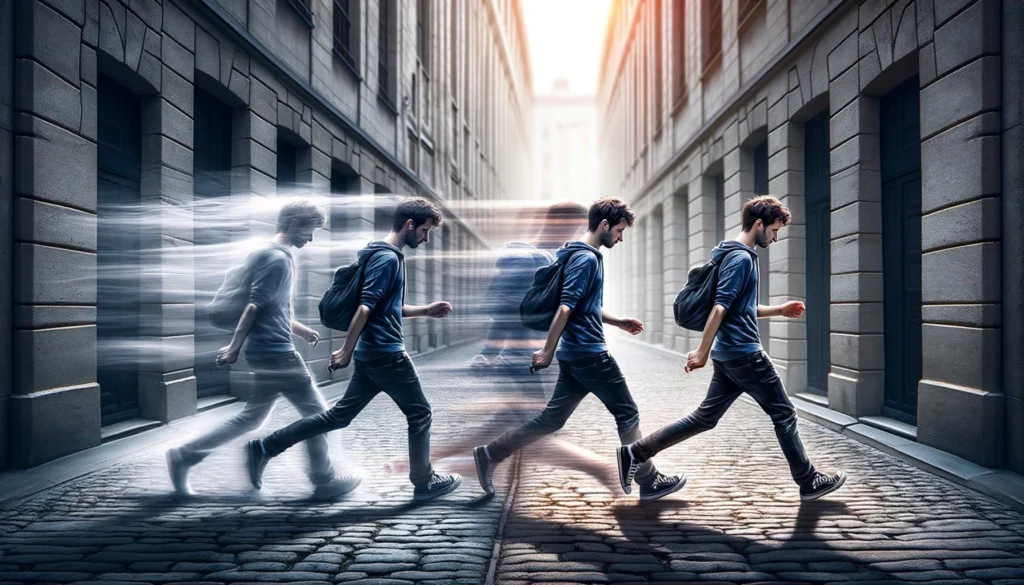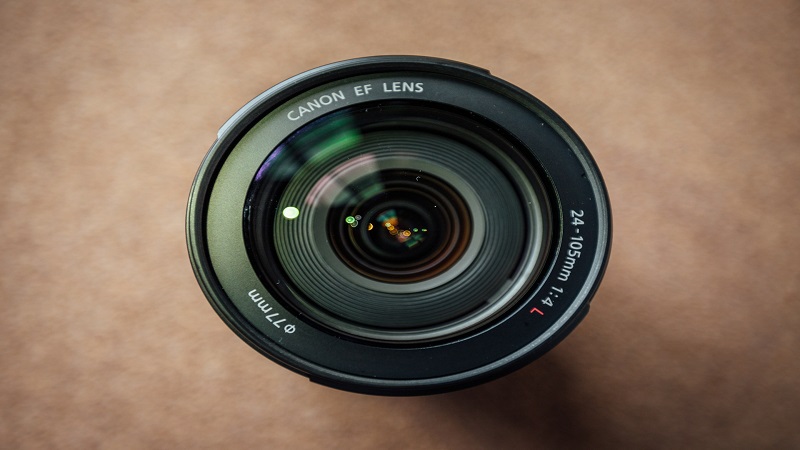The lens is arguably the most important part of your camera kit. You can only improve the performance of your camera by getting the right lens. It will not only considerably enhance your images but overall production as well. However, it is also important to understand how camera lenses work to get the best out of them. It can be time consuming and difficult to learn all the lens functions. Therefore, we are going to explain the working of lenses and their relationship with cameras to make it easier for you.
Introduction to Camera Lenses
People have been using lenses for centuries for different purposes. Similarly, they had seen remarkable improvement even before the invention of the camera. A lens can work independently of the camera as well.
What is a Camera Lens?
A camera lens, just like all other lenses, is an optical body that mounts on a camera. It contains multiple or a single lens. Some cameras have built-in lenses that cannot be removed while some lenses are interchangeable. Modern lenses tend to decrease the amount of aberration by having an equal angle of incidence and angle of refraction. Furthermore, they also come with a focus element that helps the photographer blur or acceptably sharpen certain portions of the image.
It is the aperture that controls the amount of light passing through the lens. Subsequently, the lens directs the light to the film or image sensor in the case of analog and digital cameras respectively. It is the simplest definition of how do camera lenses work. However, we will explain everything in detail in the following paragraphs.
Camera Lens Basics and their Explanation
The camera lens consists of 5 basic parts or components. We will start by explaining the focal length.
Focal Length
Every camera has letter “mm” which stands for millimeters inscribed on the front or side. These letters are followed by a number or a set of numbers. The focal length is the distance in millimeters between the image plane and the optical center of the lens. In other words, it is the total area the lens can capture. The shorter the focal length, the greater the field of view, and the longer focal lengths capture narrower images.
The focal length of your camera lens allows you to shoot footage or images with different visual properties. These properties can further have a different emotional effect on the person viewing those images or videos.
Photographers choose a specific camera lens both for creative and practical reasons. Therefore, it is imperative to understand focal length. It is the most important visual tool you may need for your videos and images.
Why Focal Length is Important?
The focal length is the distance between the film plane or camera sensor and the lens’s optical center when you focus the lens at infinity. Remember that light rays converge at the optical center once they are inside the lens body. The two main functions of the focal length are to define the field of view and the magnification for a given lens. As mentioned above, the focal length is normally measured in millimeters. Also, keep in mind that prime lenses have fixed focal lengths. Zoom lenses, on the other hand, have variable focal lengths which not only change the magnification but the visual properties of the resulting image as well.
The focal length determines which portion of the image should be in focus. It also helps you isolate elements in the background, middle ground, and the foreground. Similarly, it provides visual context for your photos besides altering their visual properties.
Focal length also dictates the magnification of your lens. You will get closer to the subject to take a narrow image in case of the longer lens. The shorter or narrow lens will capture more of the background and area beyond.
What is the Best Focal Length for You?
You may be surprised to learn that many famous photographers have a “lens clause” in their contracts. This clause limits the maximum focal length they will use to take their images. They insist on this clause because they understand how powerful the focal length is.
Many professional photographers want to retain full control of their images. Similarly, it also helps them keep their images and videos consistent.
Coming back to the ideal focal length, many people consider focal lengths of 35mm to 55mm as a standard. It is pertinent to mention that human eyes have a somewhat similar field of view. Some people even argue that the human focal length is exactly 22mm. however, this matter is up for debate.
35m to 55mm is not a perfect focal length for narrative filmmaking because it is too narrow. However, some directors still use it to great effect.
A lens with a 20mm focal length will capture a completely different picture or video than a lens with a 50mm focal length. Therefore, the focal length matters a lot both for photographers and videographers.
Lens Aperture
When it comes to camera lens basics, the lens aperture holds a special place. It controls or regulates the amount of light that can pass through the lens to the film or image sensor. It determines the light intensity for all the images you take.
The lens aperture is either measured in F-Stops (Estimated Measurement) or T-Stops (Exact Measurement). The best camera lenses usually have T-Stops while standard digital photography lenses normally have F-Stops. People usually take both F-Stops and T-Stops as interchangeable even though they are not the same. Still, people use them in place of one another.
Most indie filmmakers and digital photographers prefer F-Stops whereas T-Stops are popular among professional photographers. However, the choice of aperture type depends on the types of camera lenses you are using. The only thing that matters for now is that both F-Stops and T-Stops refer to the aperture stops.
The higher the stop number, the lower the aperture with a narrow opening. Similarly, the low stop number means a higher aperture with a wider opening. It simply means T1 is higher than T6 because it has a wider aperture. Understandably, it will also allow more light to pass through.
Camera lenses with wider aperture allow you to shoot in darker locations as they let in more light. A lens also has minimum and maximum stop numbers known as the aperture range. It is expressed in lens ratio which is equal to the focal length divided by the maximum aperture.
What is Shutter Speed?
Sutter speed is how long the shutter remains open or the amount of time it is open. Commonly, it is measured in fractions of seconds. Shutter speed is more important for videos such as television and cinema. As still photography is considered a single frame, the shutter speed is not as vital or rigid as it is for videos.
Talking about videos, you would like the shutter speed to double the frame rate 100% of the time. Frame rate is how many individual frames or images the lens creates every second. It is the shutter speed that determines how long each frame is exposed. Therefore, the higher the shutter speed, the more frames are created every second.
Also, remember that cinema and television videos have different frame rates as well.
Television Frame Rate
The standard frame rate for television is 30 frames per second (fps) or precisely 29.97fps. You can achieve this speed by setting your shutter speed at 1/60. It means the shutter will expose the lens for 1/60th of a second.
Cinema Frame Rate
The standard frame rate for cinema is 24 frames per second or precisely 23.97fps. You will have to set your shutter speed at 1/50 which means the sensor will be exposed to light for 1/50th of a second. Filmmakers follow the 180-degree shutter rule which states that the shutter speed should be double your frame rate. It enables the lens to emulate the motion the same way humans see it in real life. 180-degree shutter rule helps the filmmakers get the feel, look, and atmosphere we are used to seeing on the big screen.

What is Depth of Field?
Depth of field defines the area of acceptable focus or how much the image is in focus. It is very simple to understand. The larger the depth of field, the greater will be the area in focus, keeping everything around the camera in focus as well.
You will only get a blurred background in the case of shallow depth of field. However, it also allows you to emphasize a certain part of your image by having less imagery to process.
Sometimes, however, you want your viewers to digest the entire imagery around your camera. In this particular case, the large depth of field will come to your rescue. The depth of field, just like everything else, is a tool and you have to master it to become a good photographer.
What is the Aspect Ratio?
Next, we will discuss the aspect ratio in our guide to how camera lenses work. The ratio of an image’s width to its height is known as the aspect ratio. It is commonly presented in two numbers separated by a colon. The first number always represents the image width while the second number refers to its height. For example, the image that has an aspect ratio of 1:1 will be a perfect square.
It is associated with the lens but it is the size of the camera film or image sensor that determines the aspect ratio. Similarly, you have to ensure that you are using the right lens for the camera. For example, a lens made for a full-frame sensor will not mount or line up correctly on an APS-C-size sensor.
The lens can physically attach to the camera if you have the correct lens mount. However, the opening size will not be correct resulting in a vignette devoid of light.
Role of Aspect Ratio in the Final Image
The aspect ratio plays a vital part in how the final image looks. It is used in many other things apart from photography. Perhaps, the most common examples of the aspect ratio are your television sets.
- The old computer monitors and TVs have an aspect ratio of 1.33:1 which means they are almost square. This type of aspect ratio means the image fits onto your screen only if its edges have been cut off or it simply appears smaller than the original.
- Modern HDTVs on the other hand have a 16:9 aspect ratio. It means their width is almost twice as much as their height. These widescreen TVs fully capture the effects of high definition TV.
The above examples clearly illustrate that the aspect ratio can completely change the viewing experience of your videos and images. Aspect ratio is very important in photography and that is why so much is written and talked about it. However, you normally don’t have to do anything with it because your camera image sensor determines the aspect ratio for you.
Camera Lens Explained: Lens Extras
Apart from the basics, there are some other things to learn about the lenses as well.
Lens Breathing
Your angle of view changes or shifts when you focus on the lens. This shift in the angle of view is called lens breathing. Most modern lenses made by Canon and other high-end manufacturers don’t have any breathing. However, low budget lenses and kits do have some lens breathing.
Once again, lens breathing is more of a problem in video making rather than still photography in which the image is a single frame. It is less than ideal for your frame composition to change while focusing on a scene.
Chromatic Aberration
Some lenses fail to focus all the colors to the same converging point, a phenomenon known as chromatic aberration. It normally separates the lighter and darker portions of the images by appearing as a fringe of colors around the edges. Professional photographers give special attention to this aspect of their lens because it can make or break their images.
Lens Flaring
The phenomenon in which light scatters in a lens system is known as lens flaring. Sometimes, bright light rays fall directly on the lens, causing the light to scatter all around. You can achieve the effect in both the spherical and anamorphic lenses. However, it is more pronounced in the latter.
Most photographers consider lens flares as unwanted and ugly artifacts in their photos. But, you can use them to add a bit of character and visual effect to your images as well.
Focus Throw
Focus throw occurs when the focus ring physically rotates from Minimum Focus Distance to “infinity.” Focus throw is actually how much your lens allows you to pull focus. Unsurprisingly, still photo lenses have a considerably lower focus throw than cinema lenses with a ridiculously high throw.
Bokeh
You can also use your lens to deliver points of light that are out of focus, a process known as bokeh. You can create three types of bokeh depending on the type and qualities of the lens you use.
Also Read: Do Expensive Cameras Take Better Pictures?
Final Thoughts
Now, you have a fair idea of how camera lenses work. Experienced or professional photographers may already be familiar with all these terms but a novice may not. Concluding our guide to how camera lenses work, we would once again emphasize the importance of learning and understanding the features, functions, and overall working of your lens if you are new to photography. This is the only way to make the most of your lens and become a great photographer.

